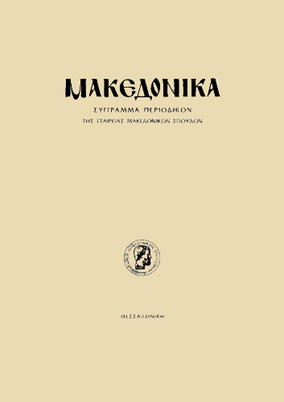Αρχαία κεραμική από τη Ρεντίνα
Part of : Μακεδονικά ; Vol.32, 2000, pages 83-112
Issue:
Pages:
83-112
Parallel Title:
Ancient Pottery from Rendina.
Section Title:
Articles
Abstract:
The hill of Rendina, to the north-east of Lake Volvi, is well known for its Byzantine fortified settlement which has gradually been brought to light by excavation work carried out over the last 25 years. The site, however, has a much longer history, a fact demonstrated by the excavation finds, which date from the Neolithic era onwards. Rendina’s immediate proximity to the site of ancient Arethousa, a city which flourished during the 5th and 4th centuries BC, supports the view that the pre-Christian activity on the hill of Rendina was directly connected with that of the ancient city. This article presents examples of Classical and Early Hellenistic pottery which, however, did not lie in clearly pre-Christian strata since finds from all periods of the settlement’s life coexist in the fill, which is small and was disturbed by the successive phases of settlement. Many of the pots that have been found were introduced from Attica, while others do not resemble the forms found in excavations in Macedonia or other parts of Greece and are therefore probably products of a local workshop. A striking feature is the lack of pottery from the Hellenistic era, which leads to the assumption that on the top of the hill, where the examples presented in this article were found, there was no activity from the early 3rd century BC onwards, a fact which may be connected with the enemy invasions of Macedonia during this period.
Subject:
Subject (LC):
Notes:
856:https://ejournals.epublishing.ekt.gr/index.php/makedonika/article/view/5727, DOI: https://doi.org/10.12681/makedonika.166
Electronic Resources:




